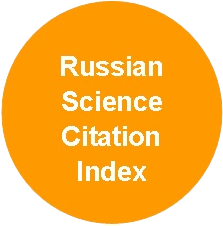Ash Forest Shelterbelts of the Korenovsky District of the Krasnodar Territory
DOI:
https://doi.org/10.37482/0536-1036-2025-5-81-91Keywords:
forest belt, ash, design, pests, system of measuresAbstract
The yield of agricultural crops and, consequently, the country’s food security depend on the state of forest reclamation complexes. Among the tree species used to create forest shelterbelts in the Krasnodar Territory, the proportion of ash plantations is high (30 %). The aim of the research has been to assess the condition of ash shelterbelts in the Korenovsky District of the Krasnodar Territory, determine the possibility of their performing agroforestry reclamation functions, and propose a system of measures aimed at restoring the vitality and extending the service life of forest plantations. The research objects have been located on the territory of the agricultural enterprise LLC “Sfera” of the Korenovsky District of the Krasnodar Territory. Generally accepted methods and recommendations have been used in the course of the work. The average inventory indicators of the dominant tree species in ash shelterbelts have been: height – 9.4 m, diameter at breast height – 18.2 cm, quality class – IV. The forest shelterbelts consisting of green ash (Fraxinus lanceolate Borch.) and downy ash (F. pubescens Marsh.) are mostly in an unsatisfactory condition. They are characterized by the average (4th) category of sanitary conditions – drying out plantings. The average survival rate of trees is 0.3. It has been established that dangerous insect pests are common in the plantings, including leopard moth (Zeuzera pyrina L.), clearwing moth (Sesiidae), ash cicada (Cicada orni Linnaeus), American ash aphid (Prociphilus fraxinifolii Riley), etc. In addition, 47 % of the surveyed plantings have shown non-compliance with the recommended designs of forest belts. There are also forest belts with various combinations of sections with different design features. The protective effect of such forest belt areas on agricultural landscapes is uneven, which, in turn, results in a decrease of land reclamation effects and shortage of agricultural products. In this case, forest belt owners are recommended to carry out measures aimed at restoring the vitality of forest shelterbelts. When carrying out a radical reconstruction of forest belts, we recommend introducing such resistant tree species as English oak (Quercus robur L.), downy oak (Q. pubescens Marsh.), black locust (Robinia pseudoacacia L.), honey locust (Cleditsia triacanthos L.), etc. Forestry and forest belt owners are not recommended to use green ash and downy ash to create a new generation of forest shelterbelts.
Downloads
References
Бекух З.А., Колядченко В.Э., Куница В.В., Рева В.В. Динамика площадей лесополос на территории Краснодарского края // Региональные географические исследования: сб. науч. тр. / под общ. ред. А.В. Погорелова. Вып. 13. Краснодар: Кубанск. гос. ун-т, 2020. С. 126–129. Bekukh Z.A., Kolyadchenko V.E., Kunitsa V.V., Reva V.V. Dynamics of Forest Belt Areas in the Krasnodar Territory. Regional Geographical Research: Collection of Scientific Papers. Under the gen. ed. of A.V. Pogorelov. Krasnodar: Kuban State University, 2020, iss. 13, pp. 126–129. (In Russ.).
Грибуст И.Р. Экологические элементы активизации энтомофагов в насаждениях засушливой зоны // Наука. Мысль: электронный периодический журнал. 2019. Т. 9, No 1. С. 55–70. Gribust I.R. Environmental Elements for Revitalization of Entomophages in the Forest Plantations of the Arid Zone. Nauka. Mysl’: Electronic Periodical Journal = World Ecology Journal, 2019, vol. 9, no. 1, pp. 55–70. (In Russ.). https://doi.org/10.25726/NM.2019.86.67.004
Ерусалимский В.И., Рожков В.А. Многофункциональная роль защитных лесных насаждений // Бюл. Почв. ин-та им. В.В. Докучаева. 2017. Вып. 88. С. 121–137. Erusalimskii V.I., Rozhkov V.A. The Multifunctional Role оf Protective Forest Plantations. Byulleten’ Pochvennogo instituta imeniv V.V. Dokuchaeva = Dokuchaev Soil Bulletin, 2017, iss. 88, pp. 121–137. (In Russ.). https://doi.org/10.19047/0136-1694-2017-88-121-137
Есков Д.В. Закономерности воздействия конструкций лесных полос и удобрений на микроклимат и урожайность яровой пшеницы на южном черноземе // Успехи соврем. естествознания. 2022. No 5. С. 12–18. Eskov D.V. Regularities of the Impact of Forest Strip Constructions and Fertilizers on the Microclimate and Yield of Spring Wheat in the Southern Chernozem. Uspekhi sovremennogo estestvoznaniya = Advances in Current Natural Sciences, 2022, no. 5, pp. 12–18. (In Russ.). https://doi.org/10.17513/use.37818
Ивонин В.М. Синергетика систем агролесомелиорации // Региональн. геосистемы. 2023. No 47 (1). С. 62–75. Ivonin V.M. Synergetics of Agroforestry Systems. Regional’nye geosistemy = Regional Geosystems, 2023, vol. 47, no. 1, pp. 62–75. (In Russ.). https://doi.org/10.52575/2712-7443-2023-47-1-62-75
Манаенков А.С. Подходы к улучшению состояния полезащитных лесных полос на Северном Кавказе // Лесоведение. 2023. No 4. С. 412–426. Manaenkov A.S. Approaches to Improving the State of the Shelterbelts in the Northern Caucasus. Lesovedenie, 2023, no. 4, pp. 412–426. (In Russ.). https://doi.org/10.31857/S002411482304006X
Методы изучения лесных сообществ / под ред. В.Т. Ярмишко, И.В. Лянгузовой. СПб.: НИИхимии СПбГУ, 2002. 240 с. Methods for Studying Forest Communities. Ed. by V.T. Yarmishko, I.V. Lyanguzova. St. Petersburg, Institute of Chemistry of St. Petersburg State University, 2002. 240 p. (In Russ.).
Примаков Н.В. Влияние лесных насаждений на продуктивность степного разнотравья // Земледелие. 2007. No 1. С. 10. Primakov N.V. The Influence of Forest Plantations on the Productivity of Steppe Forbs. Zemledelie, 2007, no. 1, p. 10. (In Russ.).
Примаков Н.В. Биоэнергетическая эффективность агроландшафтов Ростовской области // Лесн. хоз-во. 2008. No 3. С. 33–35. Primakov N.V. Bioenergetic Efficiency of Agricultural Landscapes of the Rostov Region. Lesnoe khozyajstvo, 2008, no. 3, pp. 33–35. (In Russ.).
Примаков Н.В. Изменчивость лесоводственных характеристик полезащитных лесных насаждений Краснодарского края // Изв. вузов. Лесн. журн. 2021. No 1. С. 60–68. Primakov N.V. Variability of Silvicultural Characteristics of Forest Shelterbelts in Krasnodar Krai. Lesnoy Zhurnal = Russian Forestry Journal, 2021, no. 1, pp. 60–68. (In Russ.). https://doi.org/10.37482/0536-1036-2021-1-60-68
Примаков Н.В., Латифова А.С., Дубровин Е.Ю. Эффективность конструкции полезащитных лесных насаждений Краснодарского края // Успехи соврем. естествознания. 2022. No 10. С. 41–45. Primakov N.V., Latifova A.S., Dubrovin E.Yu. The Effectiveness of the Design of Protective Forest Plantations of the Krasnodar Region. Uspekhi sovremennogo estestvoznaniya = Advances in Current Natural Sciences, 2022, no. 10, pp. 41–45. (In Russ.). https://doi.org/10.17513/use.37905
Соломенцева А.С. Состояние древесных растений на объектах защитного лесоразведения и озеленения Калачевского района Волгоградской области // Изв. вузов. Лесн. журн. 2022. No 5. С. 58–72. Solomentseva A.S. The Condition of Woody Plants at the Sites of Protective Afforestation and Landscaping of the Kalachevsky District, Volgograd Region. Lesnoy Zhurnal = Russian Forestry Journal, 2022, no. 5, pp. 58–72. (In Russ.). https://doi.org/10.37482/0536-1036-2022-5-58-72
Танюкевич В.В. Мелиоративная эффективность лесных полос ясеня ланцетного в условиях степных агроландшафтов // Изв. Нижневолж. агроуниверситетск. комплекса. 2011. No 2 (22). С. 1–4. Tanyukevich V.V. Meliorative Efficiency of Forest Belts of Lanceolate Ash in Conditions of Steppe Agricultural Landscapes. Izvestiya Nizhnevolzhskogo agrouniversitetskogo kompleksa = Izvestia of the Lower Volga Agro-University Complex, 2011, no. 2 (22), pp. 1–4. (In Russ.).
Теучеж А.А. Создание условий устойчивого развития и функционирования системы защитных лесных насаждений в Краснодарском крае // Отходы, причины их образования и перспективы использования: сб. науч. тр. по материалам Междунар. науч. эколог. конф. Краснодар: КубГАУ, 2019. С. 644–648. Teuchezh A.A. Creation of Conditions for Sustainable Development and Functioning of the System of Protective Forest Plantations in the Krasnodar Territory. Otkhody, prichiny ikh obrazovaniya i perspektivy ispol’zovaniya: Collection of Scientific Papers based on the Materials of the International Scientific Environmental Conference. Krasnodar, Kuban State Agricultural University, 2019, pp. 644–648. (In Russ.).
Тунякин В.Д., Вавин В.С., Рыбалкина Н.В. Новое о лесообразовательном процессе в лесных полосах Каменной Степи // Изв. вузов. Лесн. журн. 2018. No 6. С. 89–100. Tunyakin V.D., Vavin V.S., Rybalkina N.V. Recent Trends of Forest Formation in Forest Strips of the Kamennaya Steppe. Lesnoy Zhurnal = Russian Forestry Journal, 2018, no. 6, pp. 89–100. (In Russ.). https://doi.org/10.17238/issn0536-1036.2018.6.89
Чевердин Ю.И., Беспалов В.А., Сауткина М.Ю., Титова Т.В. Эколого-агрохимическая оценка почв Каменной Степи под лесным ценозом // Изв. вузов. Лесн. журн. 2021. No 5. С. 76–91. Cheverdin Yu.I., Bespalov V.A., Sautkina M.Yu., Titova T.V. Ecological and Agrochemical Assessment of the Kamennaya Steppe Soils under Forest Cenosis. Lesnoy Zhurnal = Russian Forestry Journal, 2021, no. 5, pp. 76–91. (In Russ.). https://doi.org/10.37482/0536-1036-2021-5-76-91
Чеплянский И.Я., Турчин Т.Я., Ермолова А.С. Дистанционный мониторинг государственных защитных лесных полос степной зоны европейской части России // Изв. вузов. Лесн. журн. 2022. No 3. С. 44–59. Cheplyanskij I.Ya., Turchin T.Ya., Ermolova A.S. Remote Monitoring of State Forest Shelterbelts in the Steppe Zone of European Russia. Lesnoy Zhurnal = Russian Forestry Journal, 2022, no. 3, pp. 44–59. (In Russ.). https://doi.org/10.37482/0536-1036-2022-3-44-59
Barsukova G.N., Derevenets D.K., Litra E.N. Ecological Factors of Increasing the Efficiency of the Use and Protection of Protective Forest Strips. IOP Conference Series: Earth and Environmental Sciences, vol. 979, art. no. 012182. https://doi.org/10.1088/1755-1315/979/1/012182
Camba Sans G.H., Verón S.R., Paruelo J.M. Forest Strips Increase Connectivity and Modify Forests’ Functioning in a Deforestation Hotspot. Journal of Environmental Management, 2021, vol. 290, art. no. 112606. https://doi.org/10.1016/j.jenvman.2021.112606
Panfilov A.V., Popov V.G., Proezdov P.N., Udalova O.G., Karpova O.V., Mavzovin V.S., Matyushkina O.L., Panfilova E.G., Martynov E.N., Motova Yu.V., Mariskin R.V., Lazarev A.A. The Yield of Spring Wheat Depending on the Designs of Forest Strips in the Steppe of the Volga Upland. Current Problems of the Forest Complex, 2023, no. 63, pp. 3–6.
Pouliot D.A., King D.J., Pitt D.G. Development and Evaluation of an Automated Tree Detection-Delineation Algorithm for Monitoring and Regenerating Coniferous Forests. Canadian Journal of Forest Research, 2005, vol. 35, no. 10, pp. 2332–2345. https://doi.org/10.1139/x05-145
Trubacheva L.V., Mukhina O.V., Vlasova O.I., Drepa E.B., Loshakov A.V. The Ameliorative Role of Forest Strips in Crop Yield Conservation. The Challenge of Sustainability in Agricultural Systems. Springer, Cham, 2021, vol. 206, pp. 963–969. https://doi.org/10.1007/978-3-030-72110-7_106













